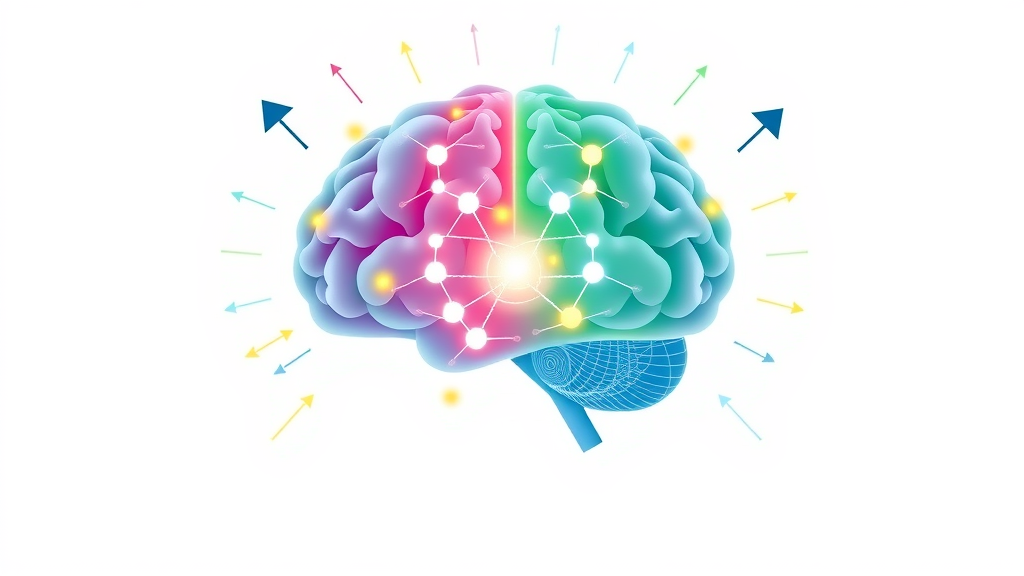Did you know that up to 90% of your mental processing takes place in the unconscious mind? This staggering fact underpins why hypnosis has fascinated scientists, health professionals, and the curious alike for centuries. Whether you seek answers for self-improvement, medical reasons, or pure curiosity, understanding what is hypnosis opens the door to the mind’s hidden abilities. In this comprehensive guide, we’ll demystify hypnosis, examine its science, bust common myths, and show you how it can be harnessed for better health and well-being.

Unlocking the Mystery: Startling Facts About What Is Hypnosis
When people wonder what is hypnosis, they often picture a swinging watch or a stage performer wielding mysterious powers. The reality is more scientific and far-reaching. Hypnosis is recognized in health care and psychology as a state of focused attention combined with deep relaxation and heightened suggestibility. Under hypnosis, the conscious mind quiets, allowing the unconscious mind to become more accessible and responsive to positive suggestions. British and American societies for clinical hypnosis endorse its use as a complementary therapy for pain management, anxiety, and behavior change—well beyond the spectacles of stage hypnosis. Understanding the hypnotic state helps us unlock remarkable abilities for healing, self-control, and performance improvement, debunking the idea that hypnosis is simply mind control or trickery.
Hypnotic experiences are unique to each individual. While some may enter a state of deep relaxation easily, others require practice and guidance from trained health professionals. Clinical hypnosis, when administered by experienced practitioners, provides therapeutic potential safe from harmful side effects. Academic hypnosis research demonstrates that, during a hypnotic state, the brain’s regions associated with focused attention, emotion, and memory communicate more effectively. This effect enables hypnotherapy to help with challenges like quitting smoking, relieving dental anxiety, and enhancing performance in various fields.
The Power of the Mind: Hypnotic State and the Unconscious Mind
One of the most compelling aspects of hypnosis involves the interaction between the conscious mind and the unconscious mind. While our waking state relies on deliberate thought and reasoning, the unconscious mind silently influences most of our habits and reactions. Hypnosis creates an altered state—a bridge—allowing a person to temporarily bypass critical conscious thinking and communicate directly with the deeper layers of the unconscious. In this hypnotic state, a trained health professional can use specific suggestion and guided imagery to spark profound behavioral change, such as pain relief, stress management, or memory improvement. Clinical research suggests that, although a hypnotised person might appear deeply relaxed, their brain is actively engaged—poised for transformation.
"Research suggests that nearly 90% of our mental processing occurs in the unconscious mind, revealing just how deep hypnosis can reach."
For those interested in taking a more hands-on approach, self-hypnosis offers a practical way to access the benefits of the hypnotic state independently. Learning the fundamentals of self-hypnosis as a life-changing tool can empower individuals to manage stress, improve focus, and foster positive habits outside of a clinical setting.
What You'll Learn About What Is Hypnosis
Definition and history of what is hypnosis
The science behind the hypnotic state
The difference between the conscious mind and the unconscious mind during hypnosis
Applications of hypnotherapy in daily life
Addressing myths, misconceptions, and religious perspectives
Understanding What Is Hypnosis: Definitions and Key Concepts
To answer “what is hypnosis?” we must first clarify its definition and purpose. Hypnosis is a state of consciousness characterized by highly focused attention, deep physical relaxation, and a readiness for positive suggestion. Unlike sleep, a person in a hypnotic state remains aware of their surroundings but feels removed from ordinary distractions. Hypnosis emerged centuries ago as an experimental form of therapy and has since evolved into a respected discipline within health care, often used in combination with other therapies for behavior change, anxiety, and pain control. Today, organizations like the British Society of Clinical Hypnosis and the American Society of Clinical Hypnosis advocate for evidence-based clinical hypnosis practices, emphasizing ethical standards and safety.
Modern health professionals recognize hypnosis as a type of complementary therapy, suitable for guided relaxation, quitting smoking, weight management, and coping with chronic pain. Unlike the dramatic mind control depicted in popular culture, genuine hypnotherapy is about empowering the individual by connecting the conscious and unconscious aspects of the mind. Reliable evidence for its effectiveness has led the field of hypnosis to collaborate with doctors, psychologists, and academic researchers worldwide.
Origins and Evolution of Hypnosis
The roots of hypnosis trace back to ancient spiritual and healing practices, but its scientific foundation began in the late 18th century. Franz Mesmer, an Austrian physician, is often credited with introducing “mesmerism,” the forerunner to hypnosis. Over time, as academic hypnosis took shape, practitioners shifted focus from mystical interpretations to clinical applications—especially in medicine and psychology. By the 19th century, hypnosis was widely studied in Europe, with pioneers like James Braid and Jean-Martin Charcot leading the way. Today, hypnosis is considered a legitimate form of therapy supported by rigorous research, ethical guidelines, and national societies. Its status within health care is now defined by professional standards that prioritize patient welfare and reliable outcomes. As it continues to evolve, the field of hypnosis blends ancient wisdom with modern science to unlock the brain’s true potential.

Key Terms: Hypnotic State, Conscious Mind, Unconscious Mind
Understanding what is hypnosis requires familiarity with a few essential terms. The conscious mind is responsible for logic, reasoning, and voluntary actions during waking hours. The unconscious mind, however, operates beneath awareness, controlling habits, automatic responses, and stored memories. The hypnotic state is an altered state where the conscious mind becomes quieter, letting the unconscious come forward and engage with therapeutic suggestions from the hypnotherapist.
This trance-like state is neither sleep nor full alertness; rather, it’s a unique state of consciousness supported by measurable changes in brain wave patterns. The more we grasp these key terms, the better we understand how hypnosis acts as a bridge between everyday awareness and the deeper processes shaping our actions—making it a powerful tool in modern clinical hypnosis and complementary therapy.
Comparing Hypnosis, Meditation, and Sleep |
|||
State |
Brain Activity |
Purpose |
Conscious Awareness |
|---|---|---|---|
Hypnosis |
Increased connectivity; focused attention; altered brain regions |
Therapy, behavior change, performance |
Heightened; directed inward |
Meditation |
Calmness, synchrony, reduced mind-wandering |
Stress relief, mindfulness, well-being |
High; detached observation |
Sleep |
Low activity (deep sleep); restorative cycles |
Restoration, memory processing |
Unconscious; minimal awareness |
The Science Behind What Is Hypnosis: How Does the Hypnotic State Work?
Unlocking the science of what is hypnosis reveals a fascinating landscape inside the human brain. During a hypnotic state, shifts in neural activity occur in areas linked to attention, imagination, and awareness. Modern imaging shows that the brain’s connectivity changes—specific brain regions like the anterior cingulate cortex and thalamus become more synchronized, enhancing the hypnotic response. This means that, rather than “switching off,” the brain enters a unique mode, highly receptive to therapeutic suggestion and behavioral change. Leading health care providers use these findings to shape effective, science-backed hypnotherapy protocols. Safety, ethical oversight, and minimizing risks such as false memories are also at the heart of professional hypnosis, especially when used as a form of therapy.
Research by the British Society of Clinical Hypnosis highlights that, although individual responses to hypnotherapy vary, the majority of people can enter various stages of hypnosis given proper induction and guidance. Unlike mind control myths, these states are always under the participant’s control, directed by a mutual agreement between therapist and client. This makes hypnosis a valuable tool in dental hypnosis, medical pain management, quitting smoking, and overcoming anxiety.
What Happens in the Brain During Hypnosis?
Under hypnosis, the brain’s focused attention mechanisms take center stage. Functional MRI scans reveal that, in a hypnotised person, connections between the prefrontal cortex (responsible for decision-making) and the insula (processing body sensations) become more robust. This neural pathway enhancement allows for altered sensations, improved concentration, and the ability to bypass habitual mental blocks. The state of deep relaxation experienced during hypnosis also lowers stress hormones, slows heart rate and breathing, and reduces muscular tension—creating the ideal conditions for therapeutic intervention.

Other studies confirm that clinical hypnosis can help “re-wire” automatic behaviors, making it easier to let go of unhealthy habits like smoking and overeating. Changes are specific and reversible, so there’s no risk of permanent mind alteration or unwanted side effects. This ability to modulate brain networks is what sets hypnosis apart as a highly adaptable and safe tool for a range of health care and self-improvement goals.
The Role of the Conscious Mind vs. Unconscious Mind
While in a waking state, the conscious mind performs logical and analytical thinking, but under hypnosis, it becomes less dominant. This temporary shift lets the unconscious mind—which holds learned behaviors, emotional responses, and automatic habits—become more open to new ideas. Trained health professionals use this opportunity to introduce specific suggestion and positive imagery, leading to measurable change in habits, perception, and even physical well-being.
Contrary to concerns about mind control, research shows that the unconscious mind remains selective—participants will not accept suggestions that conflict with their core values or beliefs. This balance ensures hypnosis is an empowering process. The goal is not to replace free will, but to help people connect with their natural inner resources, facing challenges like anxiety, chronic pain, or performance blocks more effectively than in an ordinary waking state. This is why hypnosis is increasingly integrated by health professionals into mainstream and complementary therapies.
Exploring the Hypnotic State: Stages and Experiences
To fully grasp what is hypnosis, it’s helpful to break down the typical stages of a hypnotherapy session. Each phase plays a critical role in guiding the participant from ordinary consciousness to the hypnotic state and back:
Induction – Entering the hypnotic state: The therapist uses calming speech, gentle counting, or visual imagery to relax the body and focus the mind, preparing the participant for deepened awareness.
Deepening – Relaxing the conscious mind: Through progressive relaxation or visualization, the therapist helps the conscious mind become less active, paving the way for the unconscious mind to emerge.
Therapeutic work – Engaging the unconscious mind: This phase involves guided suggestions, imagery, or therapeutic tasks designed to trigger healing, change habits (like quitting smoking), or foster insight—all while the person remains safe and aware.
Emergence – Returning to full awareness: The participant is gently brought back to normal waking consciousness, often feeling refreshed, calm, and sometimes surprised by the transformation that has occurred.

Understanding these structured stages dispels myths of mind control and highlights the collaborative nature of hypnosis as a form of therapy. The hypnotic induction and deepening are key to shifting brain states, but it’s the personalized therapeutic work that makes hypnosis so valuable in addressing deeply rooted issues.
Myths and Misconceptions About What Is Hypnosis
Despite decades of scientific progress, misconceptions persist about what is hypnosis. It’s crucial to separate fact from fiction to appreciate the real potential—and limitations—of clinical hypnosis. Here are some of the most common myths:
Loss of control: Hypnosis does not rob people of their free will. In fact, participants remain aware and can reject any suggestion they find unacceptable, making it a safe complementary therapy.
Hypnosis as mind control: No therapist can force someone to act against their values. Hypnosis fosters collaboration, not coercion, and respects the individual’s autonomy at all times.
Permanent changes to the mind: Hypnosis induces specific, temporary shifts in attention and perception—changes are reversible, guided by trained health professionals, and do not “reprogram” the brain irreversibly.
These realities are supported by guidelines from respected bodies such as the British Society of Clinical Hypnosis, ensuring safety and ethical standards. Understanding these principles enhances trust and promotes responsible use of hypnosis in health care and self-development.
Applications of What Is Hypnosis in Therapy and Daily Life
Hypnosis extends well beyond entertainment or relaxation. In the hands of skilled health professionals, it becomes a versatile tool for healing, transformation, and peak performance. Clinical hypnosis is now embraced as a legitimate form of therapy for an expanding range of situations, demonstrating science-backed results and acceptance by mainstream medicine.
Hypnotherapy for anxiety and stress: By guiding clients into a state of deep relaxation, hypnotherapy helps calm anxiety and equips people with coping skills they can use in daily life.
Behavior change (smoking cessation, weight loss): Research supports that hypnosis can reinforce motivation and reduce craving in those seeking to quit smoking or change other habits.
Improving focus and performance: Athletes, students, and professionals use hypnosis to overcome mental blocks, enhance motivation, and refine focus in high-pressure situations.
Pain management: Clinical evidence shows that hypnosis is effective in dental hypnosis and chronic pain management, providing a non-pharmaceutical approach endorsed by medical and dental health professionals.

Hypnosis is also used in academic hypnosis research, emergency medicine for acute stress, and supportive care for cancer and surgery patients. Its potential in complementary and integrative health continues to expand, offering hope and results to those seeking more than traditional approaches can offer.
Ethical Considerations and Safety in What Is Hypnosis
Ethics and safety are central to the practice of hypnosis. Only qualified health professionals—such as therapists, doctors, and certified hypnotherapists—should perform clinical hypnosis, following established guidelines from the British Society and American Society of Clinical Hypnosis. Informed consent, protection against false memories, and a clear therapeutic contract are essential for client well-being. Hypnosis is not recommended for those with certain psychiatric conditions unless under strict medical supervision. Practiced correctly, hypnosis is safe, comfortable, and free from adverse side effects, making it a type of complementary therapy suitable for many people. Always seek a certified practitioner for medical hypnosis or hypnotherapy.
What Is Hypnosis and How Does It Work? (People Also Ask)
Answer: Hypnosis works by guiding a person into a hypnotic state in which the conscious mind quiets and the unconscious mind becomes more accessible, enabling behavioral and perceptual changes through focused suggestion.
What Does the Bible Say About Hypnosis? (People Also Ask)
Answer: The Bible does not specifically address hypnosis, but perspectives vary among religious leaders. Some view it as a neutral tool, while others approach it with caution depending on its use and intention.
What Happens to Your Body During Hypnosis? (People Also Ask)
Answer: During hypnosis, the body experiences deep physical relaxation, slower breathing, reduced muscle tension, and changes in brain wave patterns, similar to states between wakefulness and sleep.
What Does Hypnotherapy Do to the Brain? (People Also Ask)
Answer: Hypnotherapy increases connectivity between different brain regions, alters perception and response to suggestion, and can help rewire certain automatic responses by accessing the unconscious mind.

FAQs on What Is Hypnosis
Is hypnosis safe for everyone?
Hypnosis is generally safe when administered by trained health professionals. However, it is not recommended for individuals with serious psychiatric disorders or certain neurological conditions without medical supervision. Always consult a certified therapist before starting hypnotherapy.Can hypnosis make you do things against your will?
No, hypnosis cannot override personal values or make someone act against their will. The process relies on active cooperation and only works with the participant’s consent and willingness.How long do the effects of hypnosis last?
The effects depend on the individual and the therapeutic goal. For behavior change, like quitting smoking, a series of sessions may be needed for lasting results. Some benefits—such as deep relaxation—can be felt immediately, while others build over time.Can self-hypnosis be learned?
Yes, self-hypnosis is a practical skill that many people master with guidance. It can be used for stress management, sleep, performance, or breaking unwanted habits and is increasingly taught by hypnotherapists and health professionals.
Key Takeaways: What You Need to Remember About What Is Hypnosis
"Hypnosis is not about losing control; it's a state of focused awareness harnessing the unconscious mind for positive change."
Hypnosis is a scientifically validated form of therapy that empowers individuals by connecting the conscious and unconscious minds. It is safe, effective, and used to address a variety of mental and physical health challenges. Understanding what is hypnosis dispels myths, and opens new pathways to transformation and healing.
If you’re inspired to explore how hypnosis can support your personal growth, you’ll find that it’s just one of many powerful approaches within the broader landscape of self-improvement. Delving into self-improvement strategies that incorporate hypnosis can help you unlock even greater potential, whether your goals involve confidence, resilience, or lasting behavioral change. By integrating these insights, you can create a holistic path toward well-being and fulfillment. Take the next step and discover how the synergy between hypnosis and self-development can transform your mindset and your life.
Ready to Experience Hypnosis? Learn More or Find a Certified Hypnotherapist Today
If you’re curious about the benefits of hypnosis for your own life or are considering it as a form of therapy, connect with a certified professional—your mind’s hidden power could be the key to breakthrough change.
 Add Row
Add Row  Add
Add 




Write A Comment